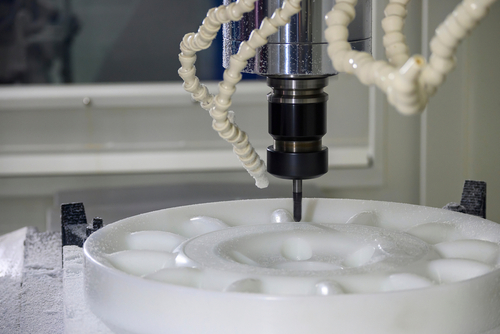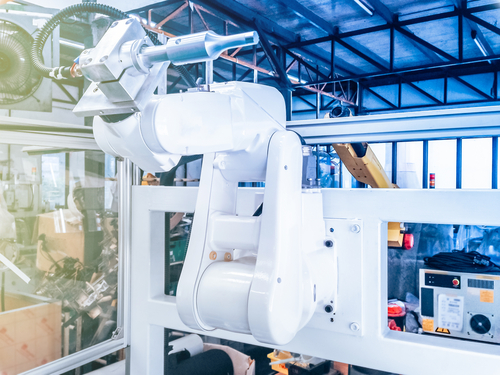Secondary machining processes follow primary manufacturing methods. Plastic injection molding manufacture utilizes different secondary processes to improve aesthetics, tolerance, dimensional integrity, and surface finish of molded parts. Learning more about the different types of secondary machining processes can help you opt for the one that provides optimum features for your product.
What secondary processes are used in plastic injection molding?
The types of secondary process that can follow injection molding include:
CNC machining
CNC machining is an automated process that controls a range of machinery to produce different prototypes. The machinery includes mills, grinders, turning, and lathes.
Milling
The peripheral or face milling operations feature a cutting tool that carves gear teeth, threads, and slots on a workpiece by utilizing multi-point rotary cutters. This process defines features such as holes, slots, contours, and pockets, and is considered a finishing coat.
Turning
Turning can be performed automatically or manually. The machine that’s commonly used for this process is the lathe where the workpiece rotates while the cutting tool passes in linear motion, creating a tube-shaped final piece. Lathe allows for high consistency and efficiency. You can program tool movements and speeds into a computer and send them to the machine for completion.
Drilling
Drilling is primarily performed utilizing drill presses, but it can also be done on mills and lathes. During the process, a cutter with cutting edges rotates to create holes on a workpiece.
Grinding
Grinding or surface grinding utilizes a powdered abrasive paste, sheet, belt, or wheel to produce a surface finish of fine tolerance. The process is a highly precise method of tolerance modification.
Tapping
Tapping creates grooves on the inside of a drilled hole by employing a conical or cylindrical thread-cutting tool. You can program tapping on a Computer Numerical Control (CNC) machine for an easy and highly efficient threading process.
Ultrasonic welding
Ultrasonic welding is a technique that locally applies high-frequency ultrasonic vibrations to workpieces that are pressed together and creates a strong weld joint area. The available types of ultrasonic welding joints include step joint, scarf joint, shear joint, groove joint, and tongue joint.
Conditioning
Conditioning is applied when you need to change a material’s internal structure in order to achieve more favorable properties. You can do this by utilizing mechanical forces, chemicals, or heat.
What are the advantages of using secondary machining processes?
Creating a functional and highly precise workpiece requires expertise and attention to detail. Opting for a reliable manufacturer to carry out your project brings many advantages:
- There are various sizes, colors, and shapes of machinable plastic to fit your application preferences and design.
- CNC secondary machining process allows for fast-paced, high-quality, and high-precision production.
- Due to lower cost and easier machining of plastic compared to metal, you can use the process for lightweight prototyping.
Which company offers top-tier plastic injection molding manufacture?
When you want to achieve highest-quality plastic parts, it’s important to understand the properties of common resin types, the available assembly methods and finishes, as well as why opting for plastic instead of metal parts is beneficial. At Wunder Mold, we’ll provide you with the information you need to achieve optimum results and suggest the solutions that match your needs and specific requirements.
With over 24 years of experience in the industry, we keep striving to advance the scope, quality, and cost-efficiency of our processes. With the highest-quality materials and workmanship, and detail-oriented methods, you can rest easy knowing that the benefits you can reap are many. Send us an email at sales@wundermold.com or reach out to us by phone.

